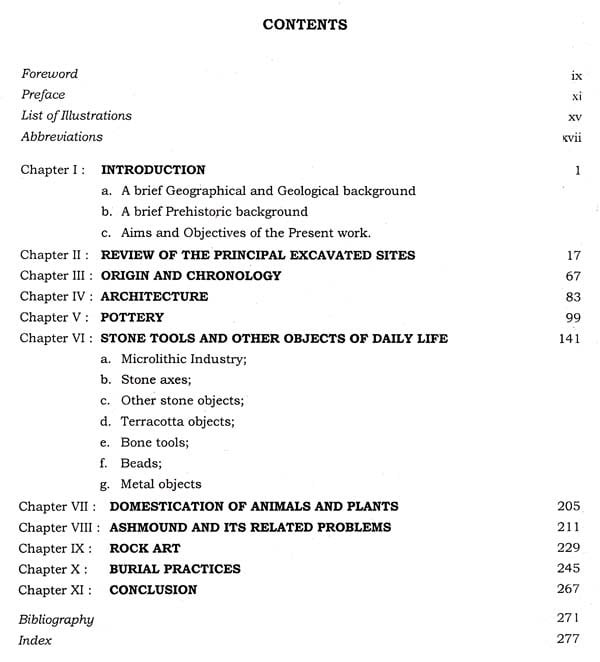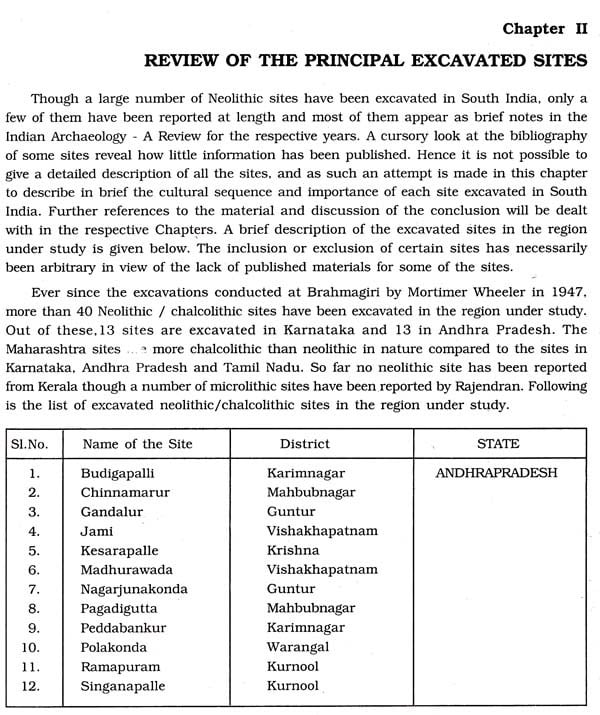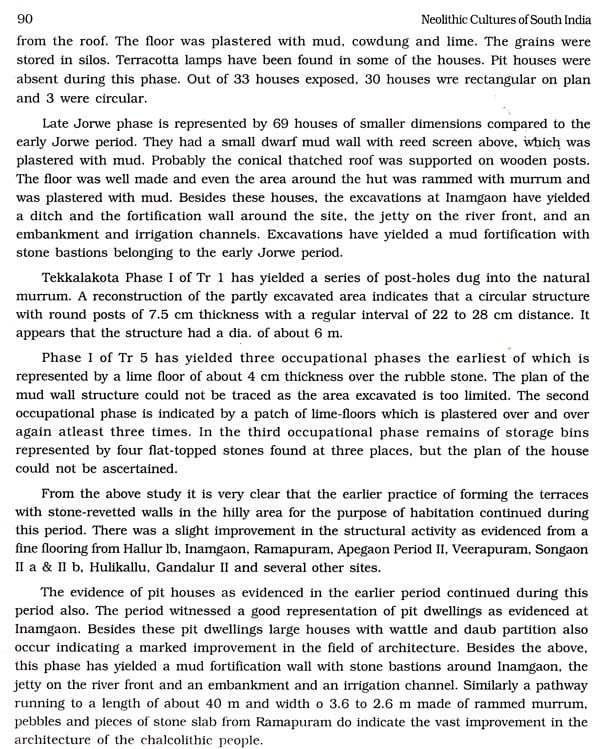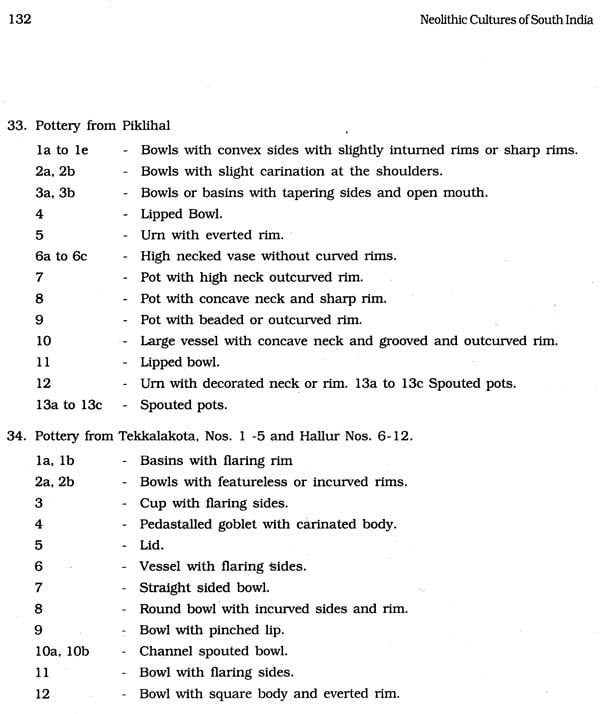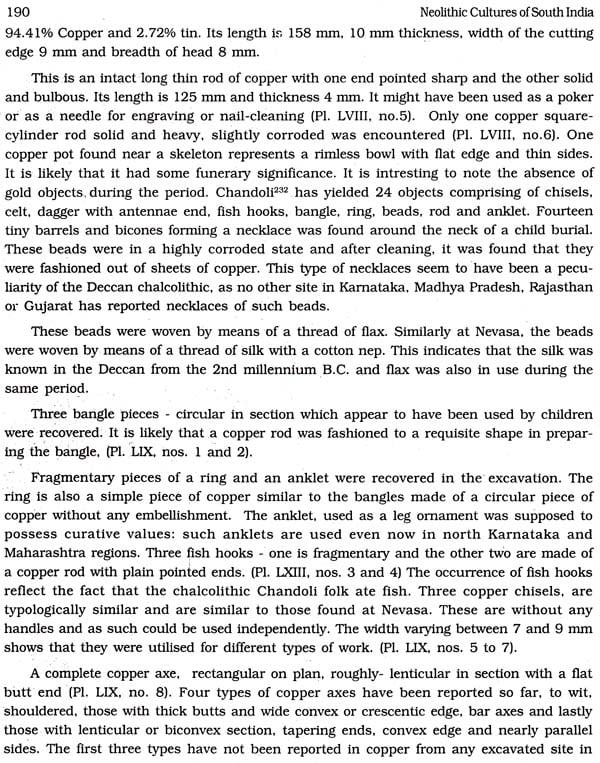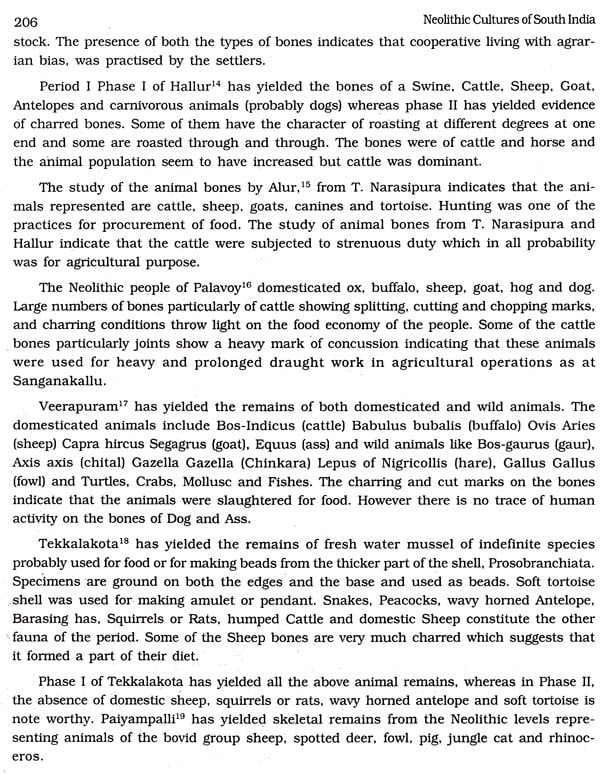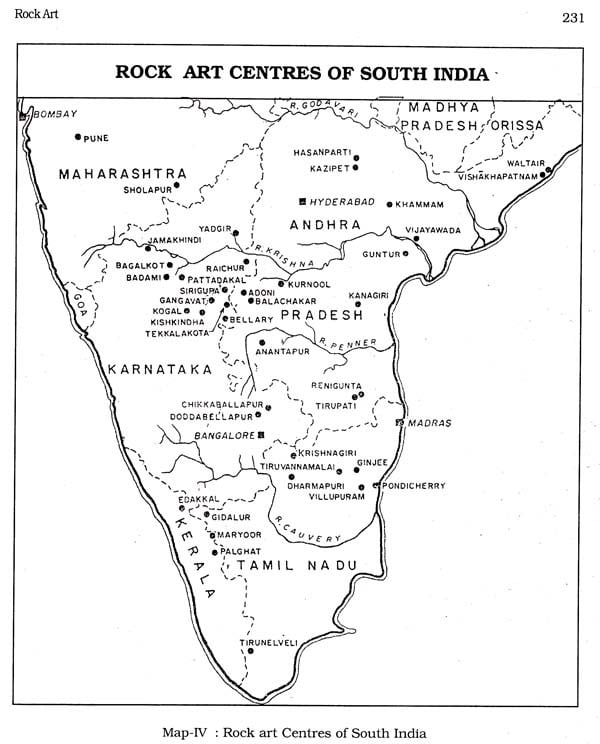
Neolithic Cultures of South India
Book Specification
| Item Code: | AZH097 |
| Author: | V. Shivananda |
| Publisher: | AGAM KALA PRAKASHAN, DELHI |
| Language: | English |
| Edition: | 2017 |
| ISBN: | 9788173201769 |
| Pages: | 302 |
| Cover: | Hardcover |
| Other Details | 11.00x9.00 inch |
| Weight | 970 gm |
Book Description
The book Neolithic Cultures of South India deals with cultural changes and edaptations of the settled life in different stages of time span during the Neolithic period in South India. This particular book has many unique qualities like the south Indian Neolithic cultural sites are briefly documented based on the excavation reports. Being the field archaeologist the author very well used the various data available in the excavation reports to farm the conclusive results. Technological developments in the field of stone tools and other associated technologies such as metallurgy, stone and terracotta beads; development of pottery and its stages really attracts the attention.
In Origin and Chronology of the Culture the methods he adopted is not based on hypothesis; but based on the scientific dating methods which speaks volumes on the authenticity of the facts. The book deals with all the aspects of the Culture like disposal of the dead, domestication of the animals and plants, architecture and the aesthetic wisdom of the people in detail. This culture in South India is associated with ash mounds and it is briefly cited in this volume.
In the Archaeological studies of Indian cultures such compilation and analysis is needed and this particular book faithfully fulfills the need of the hour in many respects. The photographs and drawings used in this book are original in nature. They enhance the quality of the presentation and it is worth to be possessed by anyone interested in the field of study.
Dr. Shivananda was born in Bengaluru the capital of Karnataka State in 1954. He received his higher education at Hubli, earning B.A., (1972), M.A., (1974) from Karnatak University, Dharwad and Ph.D., in Ancient history and Archaeology (1995) from the University of Mysore, Mysore.
Dr. Shivananda worked in Archaeological Survey of India in various capacities before he retired as Regional Director. He has authored several books including the Guide book on Mattanchery Palace (1997) and Champaner Pavagadh (2009) Catalogue of Antiquities in Tipu Sultan Museum at Srirangapattana (2013), Excavations in Gujarat (2015). He has published more than 50 papers in various books and journals and edited Gauravam, Dr. B. K. Gururaja Rao Felicitation Volume (1996), Pratnakirti Prof. Srinivasa H Ritti Felicitation volume (2012) and assistant Editor of Sri Nagabhinandanam: Dr. M.S. Nagaraja Rao Felicitation Volume (1995).
Explorations and excavations conducted during the last five decades have thrown a flood of light on the distribution of farming based settled village life beyond the domain of the Indus civilization. These have led to the discovery of more than a thousand sites covering all parts of the country except the west coast, including Kerala. These sites can be divided into two culture groups, namely Neolithic and Chalcolithic. Elsewhere in the world the Neolithic period preceded the Chalcolithic period but in India both the two cultures flourished simultaneously during third - second millennia B.C. Both groups of cultures represent the farming based, settled village life. The life style and the subsistence base of both groups being based on a combination of agriculture, animal husbandry, hunting, food gathering, fishing and fowling the role of individual components differs from one culture to the other.
The Neolithic cultures have a comparatively restricted distribution, being confined to the Kashmir valley, the northern Vindhyas, middle Ganga valley, and eastern, northeastern and south India. The main component in the Neolithic cultures consists of ground or polished stone tools like axes, adzes wedges and chisels. However, microliths, flakes and blades, bone tools, and stone and terracotta sling balls occur in both- Neolithic and Chalcolithic-groups, as do domestic stone objects like querns, rubbers, pestles and hammer stones. The architecture in both groups was very simple, consisting mainly of wattle and daub circular or rectangular huts. Neolithic pottery is largely handmade, coarse, and is poorly baked, mostly undecorated and appears drab having a limited repertoire of shapes and designs.
In the present book Neolithic Cultures of South India all aspects of the cultures like technological developments in making the stone tools and metallurgy, various beads, pottery making techniques and its stages are very well discussed. The dating methods used in the chapter on Origin and Chronology of the Culture are scientific and authentic. The disposal of the dead, Domestication of the animals and plants, architecture and the esthetic wisdom of the people are discussed in detail by the author. Associated with the problem of South Indian Neolithic culture is the ash mounds and that is also dealt with utmost care.
Explorations and excavations during the last Seven decades have thrown a flood of light on the diffusion of farming-based settled village life beyond the domain of the Indus Civilization. These have led to the discovery of more than a thousand sites covering all parts of the country except the west coast, including Kerala. These sites can be divided into two culture groups, namely Neolithic and Chalcolithic. Elsewhere in the world the Neolithic period preceded the Chalcolithic period but in India the two flourished simultaneously during fourth to second millennia B.C. Both groups of cultures represent a farming-based, settled village way of life but chalcolithic period represents a more developed stage, while the subsistence base of both groups is fairly similar being based on a combination of plant agriculture, animal husbandry, hunting, gathering, fishing and fowling. The role of individual components differ from one culture to the other. Besides, there are important differences between Neolithic and Chalcolithic period with respect to the distribution pattern, technology, architecture and ceramics. Similar differences also exist between individual cultures within each group.
The Neolithic cultures have a comparatively restricted distribution, being confined to the Kashmir valley, the northern Vindhyas, middle Ganga valley, and eastern, northeastern and south India. The Chalcolithic cultures have a much wider distribution, being found in the entire Ganga valley, eastern Rajasthan, Malwa or western Madhya Pradesh, some parts of Gujarat, western Maharashtra, and the northern Vindhyas. With respect to technology, the main component in the Neolithic cultures consists of ground or polished stone tools like axes, adzes wedges and chisels where as in the Chalcolithic cultures these types are represented by their copper counterparts, However, Microliths, flakes and blades, bone tools, and stone and terracotta sling balls occur in both groups, as do domestic stone objects like querns, rubbers, pestles and hammer stones. The architecture in both groups was very simple, consisting mainly of wattle and daub circular or rectangular huts, but some of the Chalcolithic cultures show incipient settlement planning, impressive multi roomed houses made of semi dressed stones and mud bricks and even defense architecture like ramparts and moats. In ceramic technology also the Chalcolithic cultures are more advanced. Neolithic pottery is largely handmade, of coarse clay, is poorly baked, mostly undecorated and appears drab having a limited repertoire of shapes and designs. In contrast, the Chalcolithic pottery is largely wheel made of fine fabric having a superior surface finish. It is fired at a higher temperature and is hence sturdy. It also has a larger range of shapes and decorative motifs.
South India is not a single unit but made up of many entities-regional units. These units can be defined by two factors physical or geographical and archaeological. The physical or geographical factors like climate, environment, ecology change by phase or period as development takes place or new elements or factors come in. Whereas the second factor-archaeological- is fluid in the sense that the boundaries of the archaeological regions change. They go beyond the previous geographical boundaries forming new regions with new geographical frontiers. For proper understanding of the neolithic cultures int south India, which is characterised by prominent cultural diversity, the knowledge of its geological and geographical background is very essential in order to understand such a differential pattern of cultural development.
Geologically. South India is the oldest part of India which juts out into the Indian Ocean between Arabian Sea and the Bay of Bengal and narrows to a point at cape Comorin. from where the Malabar and Coromandal coasts extend one to the north-west and the other to the north-east for more than a thousand kilometers. Late Prof. Subbarao wrote that "the whole history of India in a sense, can be described as the conflict between the centripetal and centrifugal forces engendered by geography.
The mountains of the Peninsula represent the survival of the harder masses of rock. which have escaped weathering and removal indicating that the topographical expression is not directly attributable to their structure. The chief mountains of the region of our study include the Western and Eastern Ghats.
The Western Ghats generally known as Sahyadris on the Malabar Coast are composed of two different types of rocks of varying hardness on the basis of which the range is divided into two sections-the northern and the southern. The Northern 640 Km of the Sahyadri which is built of horizontal sheets of lava has given rise to the typical Deccan trap landscape. The next 640 k.m. is made up of the granitoid gneiss in place the trap rock.
**Contents and Sample Pages**

